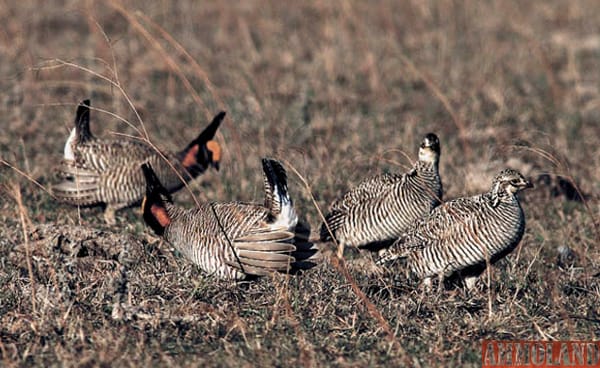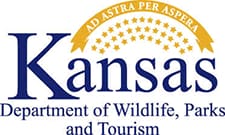

Pratt, KS -(AmmoLand.com)- According to the Western Association of Fish and Wildlife Agencies (WAWFA), aerial surveys for lesser prairie chickens will begin March 17.
The surveys, which will continue through mid-May, will be conducted by helicopter throughout the five-state lesser prairie chicken range. The surveys are conducted annually by WAFWA to ascertain population trends and how the bird is responding to management strategies identified in the Lesser Prairie Chicken Range-wide Conservation Plan.
The range-wide plan is a collaborative effort of WAFWA and the state wildlife agencies of Texas, New Mexico, Oklahoma, Kansas and Colorado. It was developed to ensure conservation of the lesser prairie chicken with voluntary cooperation from landowners and industry. This plan allows agriculture producers and industry to continue operations while reducing impacts to the species and its grassland habitat.
“Working with the wildlife agencies of each of these five states, we’ve established a consistent methodology to conduct these aerial surveys,” explained Bill Van Pelt, WAFWA’s grassland coordinator. “This allows us to get the most accurate information possible so we can see how various management strategies for the bird are working on the ground.”
In previous years, some of the fly paths prompted calls, which is why WAFWA is getting the word out about the start of aerial survey work.
Last year’s aerial surveys brought good news: an abundance of spring rainfall in 2015, along with ongoing efforts associated with the range-wide plan and other conservation initiatives, helped increase the lesser prairie chicken population by approximately 25 percent from 2014 to 2015. Results from this year’s surveys will be available on July 1.
Despite last year’s encouraging news, the population is still low compared to historical numbers, and concern for the lesser prairie chicken and its habitat still exist. WAFWA is committed to continued successful implementation of the range-wide plan and the long-term recovery of this iconic grassland bird.
For more information about the lesser prairie chicken and the conservation work being done to support it, see the Lesser Prairie Chicken Range-wide Plan at www.wafwa.org.
About the Kansas Department of Wildlife, Parks and Tourism:
As a public steward of the Kansas natural resources, the mission of the Department of Wildlife, Parks and Tourism is to: Conserve and enhance Kansas natural heritage, its wildlife and its habitats–to assure future generations the benefits of the state’s diverse, living resources; Provide the public with opportunities for the use and appreciation of the natural resources of Kansas, consistent with the conservation of those resources; Inform the public of the status of the natural resources of Kansas to promote understanding and gain assistance in achieving this mission.
For more information on KDWPT, please visit www.kdwpt.state.ks.us.
